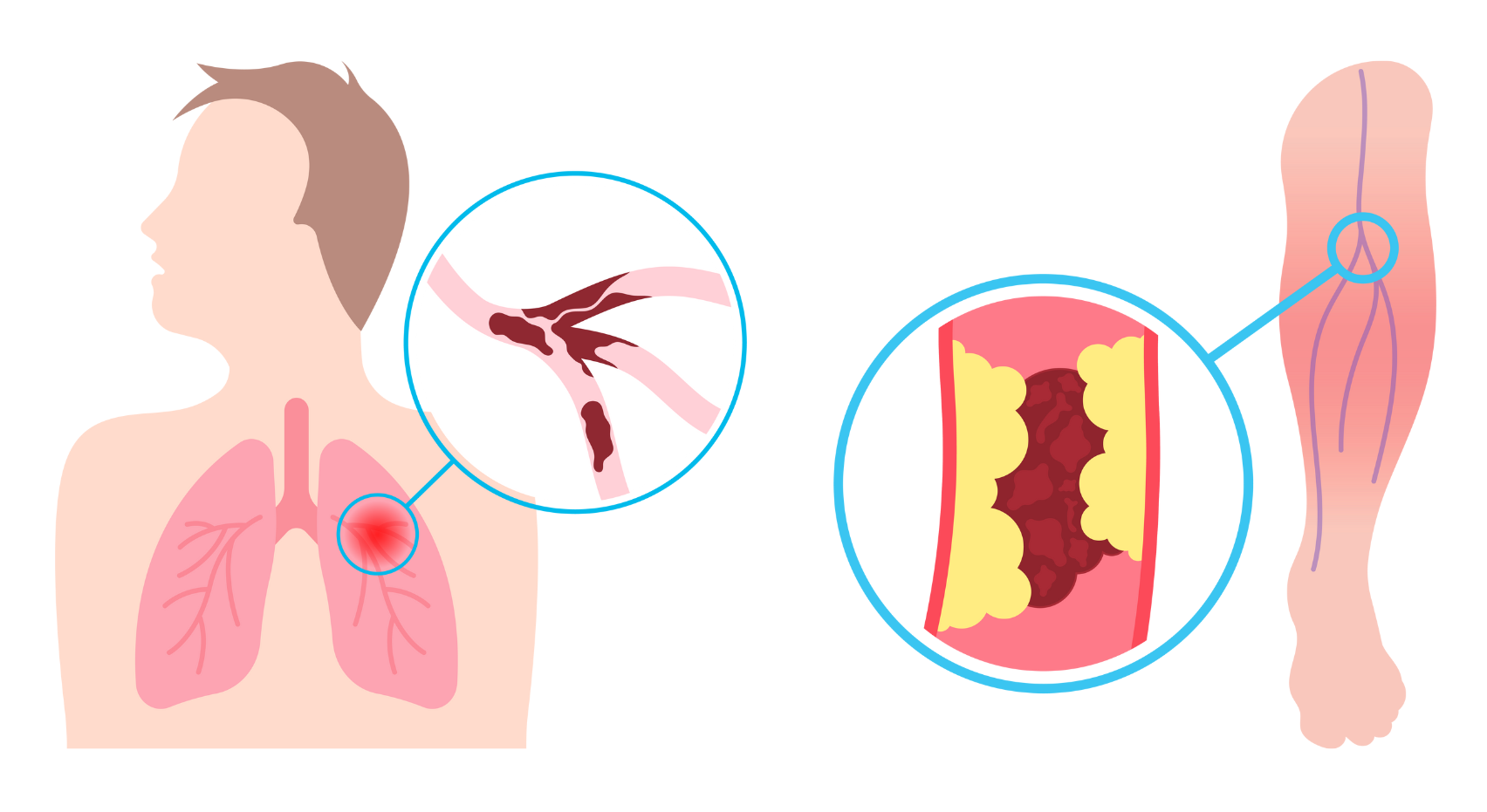Deep Vein Thrombosis (DVT)

What is Deep Vein Thrombosis?
Deep vein thrombosis (DVT) is a blood clot that forms in a deep vein, most commonly in the leg.
Who’s at risk for Deep Vein Thrombosis?
DVT can affect anyone, but it is more common in individuals with a family history of the condition or a history of medical conditions that increase the risk of blood clots, such as cancer or heart disease. Other risk factors may include immobility, surgery, and pregnancy.
What causes Deep Vein Thrombosis?
DVT is caused by a combination of factors, including blood clotting disorders, damage to the blood vessels, and decreased blood flow.
How does Deep Vein Thrombosis start?
DVT may develop slowly over time, and symptoms may not become apparent until later stages of the disease. The condition can lead to a range of symptoms, including pain, swelling, and redness in the affected limb.
What are the symptoms of Deep Vein Thrombosis?
The symptoms of DVT can vary widely from person to person, but common symptoms may include:
- Pain or tenderness in the affected limb
- Swelling in the affected limb
- Redness or warmth in the affected area
- Shortness of breath or chest pain (if a clot travels to the lungs)
How is Deep Vein Thrombosis diagnosed?
DVT is typically diagnosed through a combination of medical history, physical examination, and diagnostic tests, such as ultrasound or blood tests. Imaging tests, such as CT scans or MRI, may also be performed to assess the extent of the clot and identify other complications.
How can Deep Vein Thrombosis be treated?
Treatment for DVT typically involves anticoagulation therapy, which helps prevent the clot from growing and reduces the risk of complications. Lifestyle changes, such as regular exercise and maintaining a healthy weight, can also help reduce the risk of blood clots.
What complications may occur with Deep Vein Thrombosis?
Untreated DVT can lead to serious complications, such as pulmonary embolism or post-thrombotic syndrome. The condition may also impact a person's quality of life, leading to social isolation, depression, and other mental health issues.
How can I prevent Deep Vein Thrombosis?
Preventing DVT involves managing underlying medical conditions, such as heart disease or cancer, that can increase the risk of blood clots. Other preventative measures may include regular exercise, avoiding tobacco and excessive alcohol consumption, and maintaining a healthy weight.
Long-term management of Deep Vein Thrombosis
Long-term management of DVT involves ongoing monitoring of symptoms and regular follow-up with healthcare professionals. It is important to work closely with healthcare professionals to develop an individualized treatment plan that addresses the specific needs of the person with DVT.
What is recent research saying about Deep Vein Thrombosis?
Recent research has focused on identifying potential new treatments for DVT, as well as exploring the role of genetics and lifestyle factors in the development of the condition. There is also ongoing research into the effectiveness of different types of therapy for managing symptoms and preventing complications.
Where can I go for more information on Deep Vein Thrombosis?
The American Heart Association and the National Heart, Lung, and Blood Institute provide up-to-date information on DVT, including diagnostic criteria, treatment options, and ongoing research.

